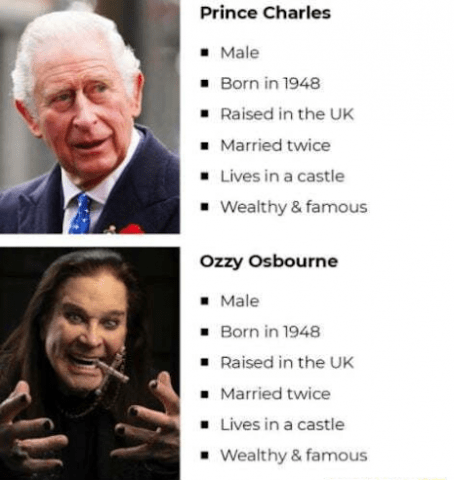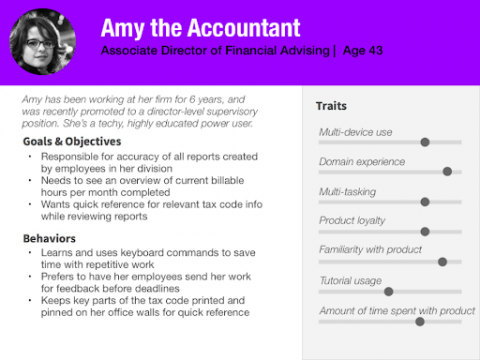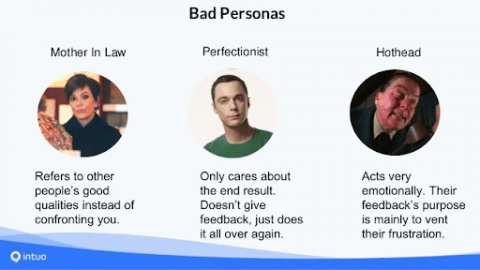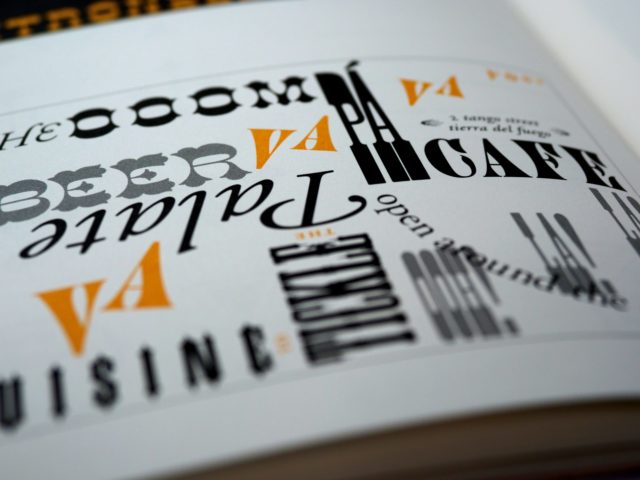If you’ve ever come close to a user experience (UX) project, you’ll have dealt with user personas.
Open the document and you’ll see a stock image from Unsplash smiling back at you.
Here’s Hetty. She likes Netflix, Oreos and shopping in Aldi. She also has a penchant for Dostoyevsky and is afraid of Tipp-Ex. She doesn’t suffer fools gladly (maybe because she’s 37 – typical millennial), and she has a Geography degree from Aberdeen University.
A client’s brand agency has given you this, and you now need to design the optimal digital journey for Hetty to recommend a SaaS product to her EMEA team.
Yes, the above is facetious but it’s a fairly accurate version of events that I’ve seen time and time again. User personas generally offer little use in the UX design of an experience. Need more evidence? Oh look, it’s that not at all overused meme again… But, user personas, done right, offer huge value. They can:
But, user personas, done right, offer huge value. They can:
- Humanise your users for the wider business
- Provide context around action
- Demonstrate motivation (outside of a core need)
None of this requires their age or favourite book. It requires insightful interviews and the creation of user personas that bring the user’s motivations to the fore. Not creating a fictional Hetty that is so overburdened with superfluous information the point is lost.
What is a user persona?
A user persona (or more commonly persona) is a humanised segment of your audience – it’s the equivalent of naming your pets. You care far more about them if they are named ‘Mrs Wiskerson’ than if they are called ‘Cat’. You’ve most probably heard of buyer personas, but they’re subtly different.
Buyer personas aren’t necessarily users, and in most cases, they are your ideal prospective customers, built to give your teams something to aim at and focus your funnel around. User personas concentrate far more on the needs and context of use and the desired outcomes.
Why are they important?
Defining user personas can give experience teams a deeper understanding of their target audience, which is fundamental in creating exceptional experiences, products and services. While it might seem quite twee to say this, they can help to ground a team and keep the user (if done right) at the centre of the work.
This can only happen if the personas are built on solid research and have contextual relevance and the right level of detail. Unfortunately, however, a lot of the time, this doesn’t happen, and the personas built of our users are…not as helpful as you might think.
Why do we get user personas wrong?
User personas are often developed by marketing teams – and not built for designers. They exist to put a human face on a business’ perception of their users. But, they end up being an A4 sheet with around three useful points on them.
We see that someone is liberal, has an Xbox and is three-quarters of a bar graph interested in paid ads. There’s never context to what three-quarters of said bar graph means. And there is often a bio that explains just how wacky Jim is and how his friends tell him he should have gone to Oxford.
They are stuck to a wall or, worse, filed away in a digital drive never to be looked at again. The client is charged for the work or the internal marketing team presents them to senior stakeholders, but they play no part in the strategy or design and usability process that follows because they hold no value in the first place.
The intentions are always good but the work is of limited value.
Can Jobs To Be Done save the day?
In recent years, the Jobs To Be Done (JTBD) framework has emerged as the rival to demographic-based user personas, zeroing in on the ‘thing’ that users are trying to achieve. It’s a focus on outcomes over anything else. Zero fluff. Just pure user motivation.
It requires designers to stop thinking about the solution, and consider the underlying job underpinning a user’s actions.
Vinyl, Walkmans, Napster, Spotify and Tidal have all delivered music into people’s ears. The job here is not to provide music digitally or physically, it’s to connect people with music. It’s to enable people to listen to music conveniently.
This has always been a thing. Each designer tackled that particular job with a different solution, each more technically advanced than the last. They didn’t build a solution to the problem of ‘how can we create a digital music platform with podcasts, Joe Rogan, and sketchy information’ but ‘how can we deliver music to people?’
It sounds simple, doesn’t it? Tackle the overarching job rather than retrofitting a solution. No need to worry about personas. You’re tackling a job that crosses demographic boundaries and applies to multiple user groups at once.
Yes, in theory.
Here’s where personas fight back
User personas have value when done properly. And, while there is a growing swell of opinion to abandon them altogether, this is a misjudgement.
As Page Lauubheimer from Nielsen Norman Group says, “this point of view is based on a fundamental misunderstanding of the purpose of personas as primarily demographic representations of users, missing the key behavioural considerations that are essential to good personas and that provide much needed guidance for interaction design and product strategy.”
Jobs can cross all sorts of classifications. Like the meme above, Ozzy and our future king can be attempting to complete the exact same job. The classic ‘needing a hole in the wall’, for example. But there’s nuance here and this is where personas come in.
No, not the ‘both same age, both live in castles’ type of persona. But, if we combine the core focus of JTBD and overlay user persona information on top, we’re reaching a place where we have both brutal focus and enough context actually to be able to design something of value.
Personas appropriately crafted include a lot more than just demographic or superfluous information. They deliver:
- The context of a user’s life – what drives them, how do they use a product/solution and why?
- A fleshed-out visual representation of an example user, that the product needs to deliver for
Personas, even poorly done, elicit empathy from your team. If the personas are awful, empathy will be misplaced, and its value in the visual design process will be limited. But, if you’ve understood your users’ pain points, experiences and context, they can channel your teams’ minds in the right direction.
More this: Credit: Nielsen Norman Group
Credit: Nielsen Norman Group
Than this: Relying purely on a JTBD approach can lose this nuance, whilst depending purely on a persona-based system can focus so heavily on the individual user group that you downgrade the core job that connects them all.
Relying purely on a JTBD approach can lose this nuance, whilst depending purely on a persona-based system can focus so heavily on the individual user group that you downgrade the core job that connects them all.
One without the other is like Ant without Dec. Every chance of a car crash.
So what should you do?
Ask yourself – and your team – two simple questions:
- Do you understand what base need, or job, your product exists to provide for and do you know that your users have that need?
- Do you understand the context and nuance of each job? Do you understand why five different people would approach the same core job in different ways, and can you effectively design solutions for all of them?
If the answer to either one of these is no, then chances are you don’t have the information you need to design for your target users effectively. And there’s a simple solution – listen to your users, deploy a solid framework incorporating user personas and JTBD, and turn your customers’ input into actionable insight.
Or, ask an agency to support you. Hi… 👋






